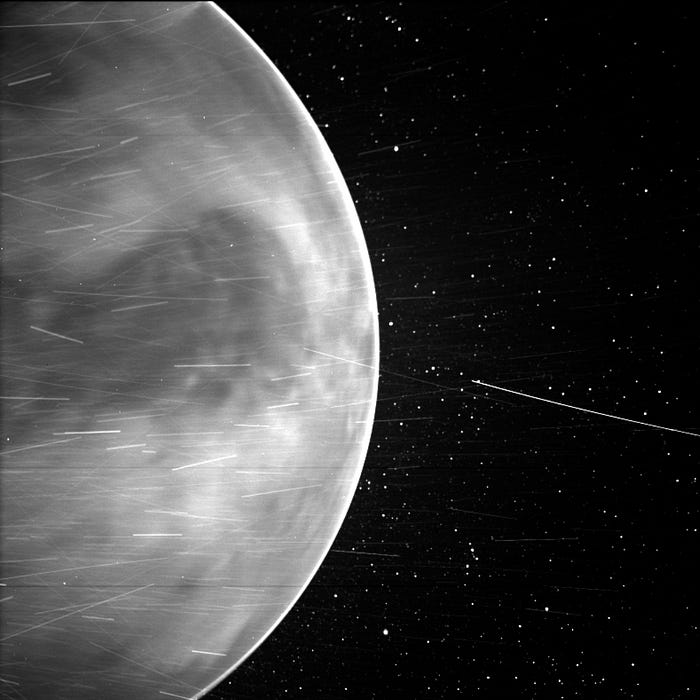Member-only story
Nighttime Side of Venus Revealed
During a recent flyby of Venus, the Parker Solar Probe captured visible light and near infrared images of the nightside of our sister planet, revealing various landforms.
Earlier this week, we interviewed Dr. Adam Szabo, Mission Scientist for the Parker Solar Probe. Now, we were talking to him because Parker is coming up on its next perihelion, or closest approach to the Sun, on February 25, but we apparently jumped the gun as they released new images of Venus just this week.
That’s right. Images of Venus.

To boost its speed and manage its trajectory, the Parker Solar Probe performs close flybys of Venus, and while there, takes as much data as possible. The latest images of Venus were taken with the Wide-Field Imager, also known as WISPR, and they show all of the nightside of Venus. These images are mostly in visible light but lean into the near-infrared, which is amazing in and of itself. Venus is difficult to image because of the heavy cloud cover and high temperatures. It’s especially difficult to see any detail in visible light, and that’s why the nightside was chosen for this observation.
The images actually captured details of the surface. There is a faint glow in which can be seen continental regions, plains, and plateaus. There’s even a halo of oxygen surrounding the planet. All of which add up so some amazing data we can use to study our so-called sister planet. As lead author Brian Wood explains: Venus is the third brightest thing in the sky, but until recently we have not had much information on what the surface looked like because our view of it is blocked by a thick atmosphere. Now, we finally are seeing the surface in visible wavelengths for the first time from space.
The Parker Solar Probe isn’t the first mission to visit Venus. NASA’s Magellan took images that helped create the first radar maps of the planet back in the 1990s. And then JAXA’s Akatsuki took infrared images while orbiting in 2016. And in the best of science results, the Parker Solar Probe images match up with Magellan’s radar maps. The press release explains: The WISPR images show features on the Venusian surface, such as the continental region Aphrodite Terra, the Tellus…
